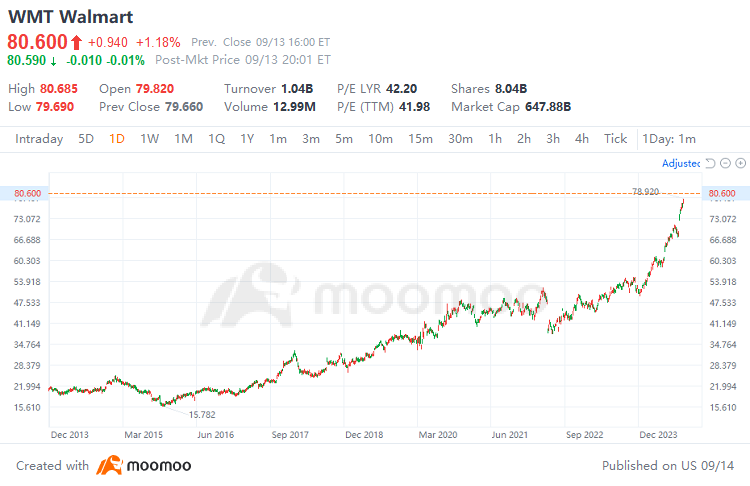Walmart: Growth Challenges Amid High Valuation
Welcome to follow me, let's communicate together!
Walmart's stock price has risen significantly in recent years, with a P/E ratio of 42.2 and a price-to-free cash flow ratio exceeding 80, reflecting market optimism about its future. However, given Walmart's already massive scale and intense market competition, its potential for earnings growth does not seem to justify the current high valuation.

In the past few years, Walmart's earnings growth has not been strong, yet its stock price has climbed, reaching historical highs in P/E and price-to-free cash flow ratios. In its low point in 2015, Walmart's P/E ratio was just 11, but subsequent growth was primarily driven by stock buybacks rather than substantial earnings improvement.
Investors' high valuation of Walmart may be based on expectations of future earnings growth, but considering its dominant position in the US retail market, the room for sales growth is limited. Meanwhile, competitive pressure from Costco and Amazon may continue to constrain its profit margins.
Despite growth in high-margin areas like advertising, these positive factors seem to have already been fully anticipated by the market. At current valuation levels, for Walmart to achieve returns in line with market expectations, it needs to achieve significant earnings growth in the coming years, which is particularly challenging in a competitive retail environment.
In the short term, market sentiment and overall market trends may continue to support Walmart's high valuation. In the long term, whether Walmart can leverage its vast customer base to drive growth in service income and profit margins will be crucial in determining whether its valuation can be sustained.
Disclaimer: Community is offered by Moomoo Technologies Inc. and is for educational purposes only.
Read more
Comment
Sign in to post a comment
